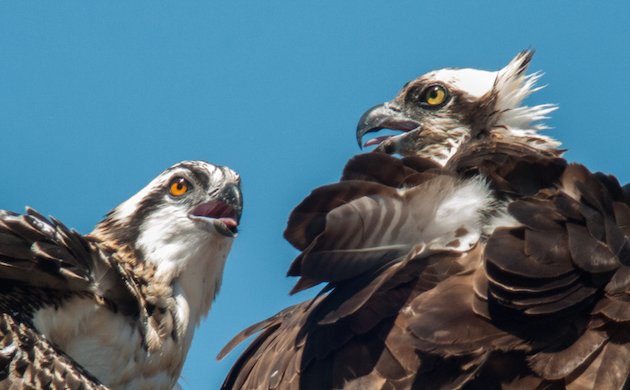
The Osprey (Pandion haliaetus) pictured above were photographed while the nestlings were still in the nest. One of the nestlings decided to test its flight feathers during the photo shoot, to the dismay of its sibling.
Did you notice that the nestlings have orange eyes…
while the adult has yellow eyes. (Click on photos for full sized images)
There are several species of birds whose eye color changes from birth to adulthood. One species, in which you may be familiar with this phenomenon, is the Red-tailed Hawk (Buteo jamaicensis). Their iris is dark in newly-hatched birds, becoming grayish then buff yellow in juveniles…
and gets darker as the bird ages into maturity, seen here in this dark morph Red-tailed Hawk.
The Bald Eagle (Haliaeetus leucocephalus) nestling has a dark brown iris…
which becomes a buffy brown within a year…
and then pale yellow at maturity as is the case with this leucistic Bald Eagle.
But I’m actually here to consider the differing shades of iris in the Acorn Woodpeckers (Melanerpes formicivorus) seen in my yard. The adult Acorn Woodpeckers have golden-yellow or white irises like this male sticking his head out of a nest entrance.
The adult female looks similar but has a black gap between the white forehead and her red crown.
I have seen plenty of juvenile Acorn Woodpeckers with very blue eyes like this one. Both the male and female juveniles have solid red crowns making it near impossible to sex them.
Just last week was the first time I had ever seen juveniles with brown eyes. The specimen below has fairly dark brown eyes.
This juvie looks like it’s on its way to being an adult male. His tan iris seems to be fading to yellow and his spotty crown is beginning to appear more solid.
I’m sure there are many more bird species whose irises change from nestling to adulthood. I would appreciate any examples you may know of in the comment section!


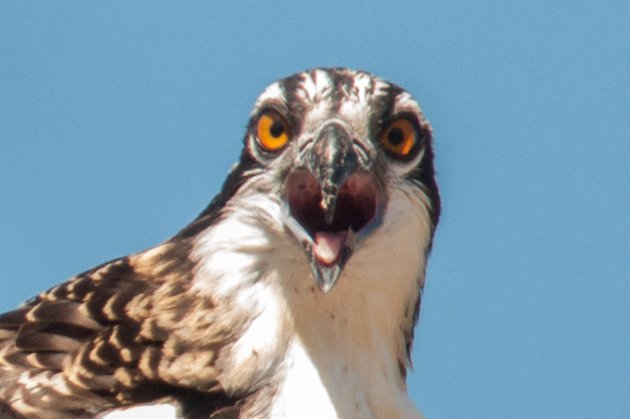
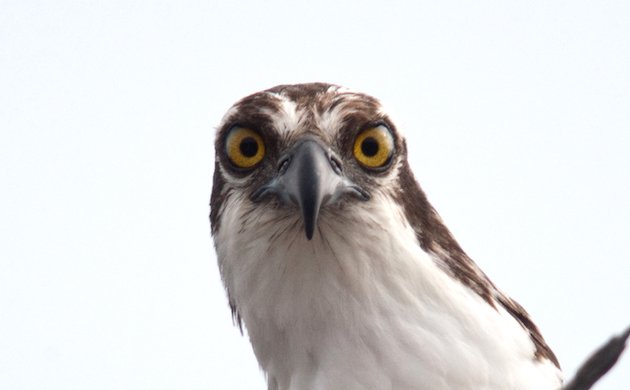
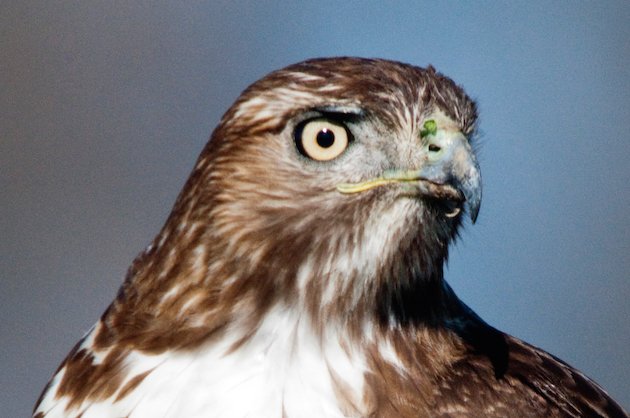
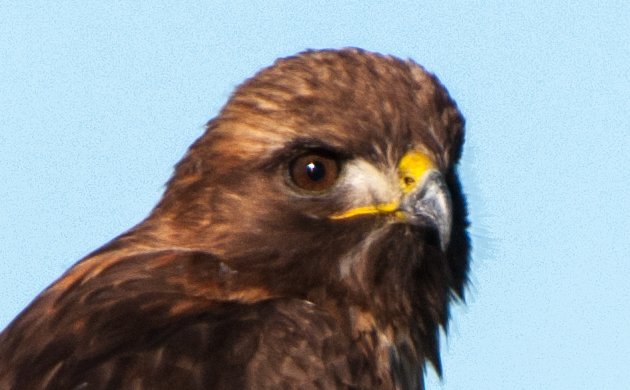
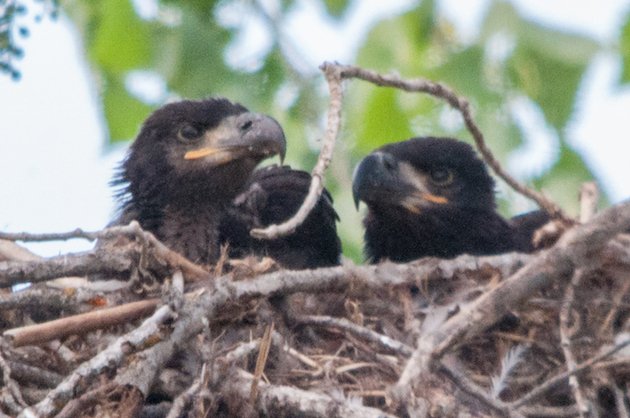
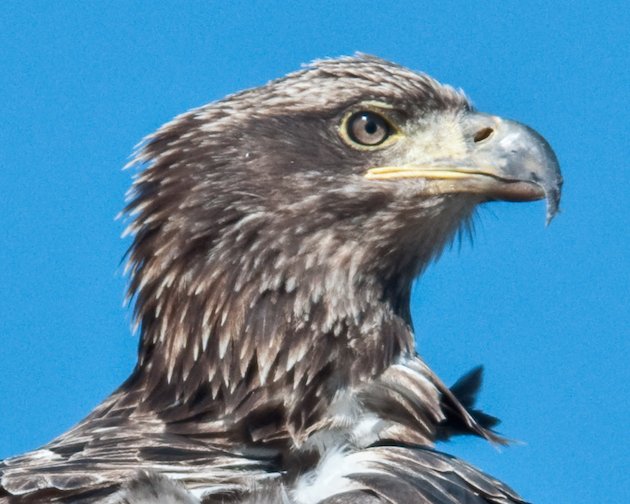
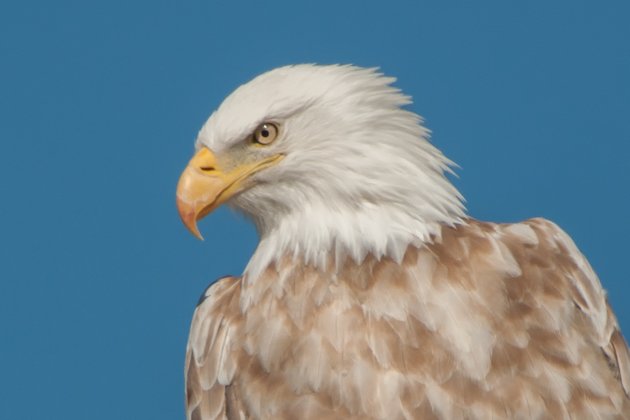
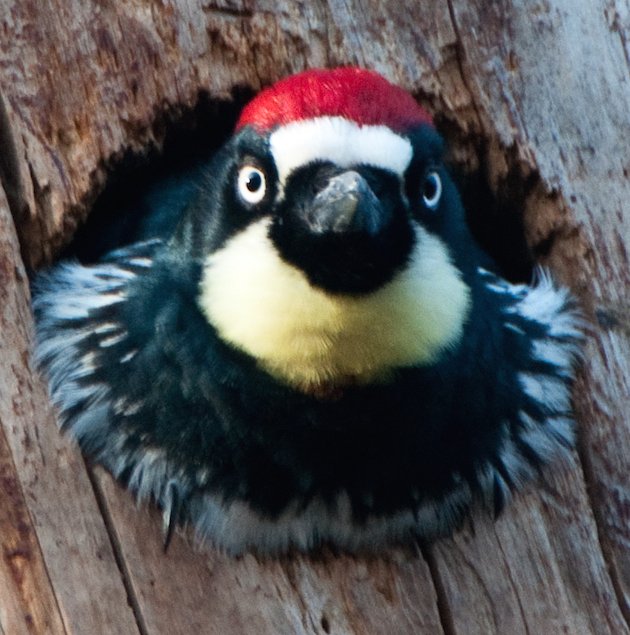
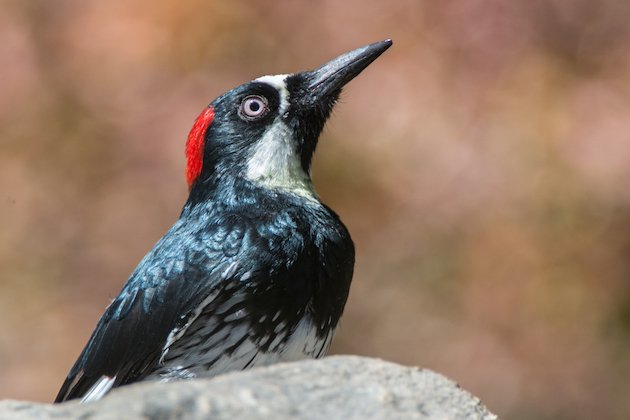
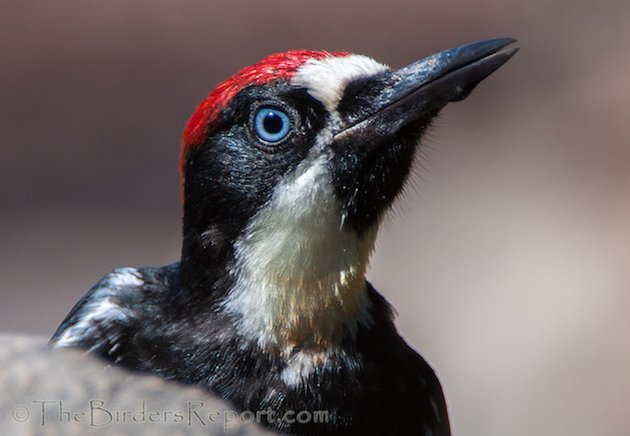
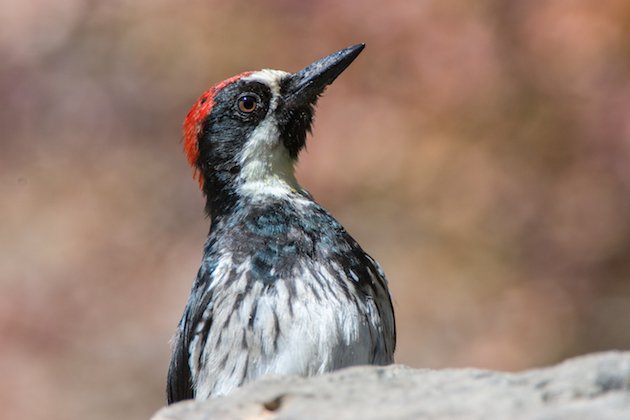
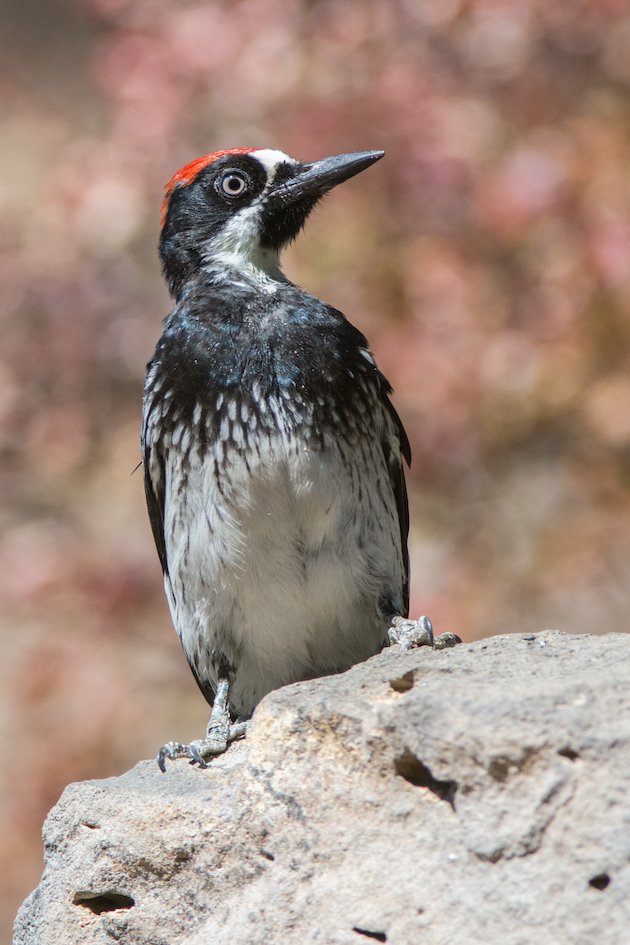











Interesting post, thank you! Juvenile Black Oystercatcher eyes are darker than the bright orange of the adults.
Here are a couple of goodies for you….our local endemic Gray Thrasher adult has a orangeish yellow iris, where the juveline has a light gray.
Aslo, I have discovered a group of Acorn Woodpeckers, in a very isolated area of our local biosphere, that all, adults and juveniles (as best as I have been able to see prior to fledging) that have completely black eyes.
Thanks Wendy. The weirdest thing. When I picked my mail yesterday, my copy of California Audubon’s Summer/Fall newsletter was there. On the back cover was a quiz called “The Eyes Have It!”
You can see the quiz images here: http://thebirdersreport.com/wp-content/uploads/2017/08/TheEyesHaveIt-63.jpg
Let me know if you want the answers 😉
Thanks Tom. Very interesting fact about the Acorn Woodpeckers down there. I wonder what would cause something like that in an isolated population?
I do need the answers to The Eyes Have It. Thank you!
It was the Ospreys that caught my eye. I’d never heard of a Osprey until May 19. I was scrolling on YouTube and this bird caught my eye. She was sitting on her eggs and the nest and Mom Osprey were covered in snow. So I had to check out that nest the next morning to see how she was doing. I got see her first baby hatch. It was amazing and the Ospreys at this nest stole my heart. I watch it for several hours a day. The last Baby might have migrated today. It was sad but I know she’ll be fine. I Love Ospreys! I requested the answers for identifying the birds eyes. Thank you for this article.
Interesting Prissie. You must live in the far North? They are amazing birds. You may be interested in my Osprey Love post: https://www.10000birds.com/osprey-love-in-northern-california.htm
These are the answers to the Eyes Have It:
1. California Condor
2. Black Oystercatcher
3. Allen’s Hummingbird
4. Black-footed Albatross
5. Black-crowned Night Heron
6. American Crow (juvenile)
7. Kittiwake
8. California Quail
9. Golden Eagle
10. California Brown Pelican
11. Burrowing Owl
12. Surf Scoter
Hi Larry! Great article! I’ve noticed that about Greater Roadrunners in different stages of life, with juveniles having light brown or gray irises, and adults (both male and female) having a distinctive gold/yellow circle in the iris around the pupil. They’re remarkable birds, one of my favorites! Cheers.
I am watching a pair of ospreys on a local access cable channel in my area; they are incubating three eggs; one of the birds has golden eyes, the other, whom I think is the female, as she spends, by far, the most time incubating, has very light greenish-blue eyes, almost aqua; Is this unusual?